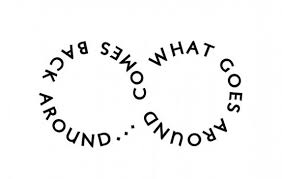
The Chicago Blackhawks’ recent Stanley Cup win has made fans jubilant. Coach Joel Quenneville’s neighbors have TPed his home, the Cup is making its mythic rounds, and a parade and rally are set for today.
With the Hawks’ profile at an all time high, it’s an ideal time to talk about the Indian logo of Chief Black Hawk that adorns jerseys, t-shirts, the locker room, and the ice at home games. In my view, it is time to remove this logo, which is an insult to the dignity of Native Americans.
Many people know that the Chicago Blackhawks were named after the military division of its former owner, Frederic McLaughlin. But most don’t know that Black Hawk was a leader of the Sauk and Fox tribes of Illinois who fought against the displacement of his people by white settlers. When Chief Black Hawk was defeated, “his captors made him the equivalent of a mascot” (“Origin of a Name,” Brandon Zeman), parading him in front of huge, gawking crowds.
It’s time to remove this instance of cultural appropriation. Here’s why:
1. Indian names, likenesses, and mascots for sports teams are dehumanizing. Blackhawks fans argue that their logo is a way of honoring Chief Black Hawk. But most Native Americans would disagree. According to the National Congress of American Indians, which represents different tribes across North America, “Rather than honoring Native peoples, these caricatures and stereotypes are harmful, perpetuate stereotypes, and contribute to a disregard for the personhood of Native peoples.” And in an article about the Blackhawks logo, ESPN writer Jon Greenberg acknowledges, “it’s not an honor to some.” (espn.go.com, “Dialogue is key with Blackhawks logo, 6-20-14)
Another Native American named Suzan Harjo, a Washington D.C.-based advocate for Native American causes, explains it this way: Indian logos “relegate native people to a certain time in history that’s not today, and it’s intended to do so. It kind of keeps us in the backwater of history.”(chicagotribune.com, “Protests rare over Blackhawks’ name, logo,” John Keeling, reporter, 6-19-13)
For me, the most poignant evidence of how disrespected Native Americans can feel when confronted by Indian logos and mascots comes from Chicagoan and long-time Blackhawks fan Anthony Roy. In the ESPN piece, he describes how hard it is to go to games and see the logo everywhere he turns. “Being a Native American here, it’s a trigger. It’s a sea of floating dead Indian heads.” Doesn’t sound like much of an honor to me.
2. The so-called support of Indians for the Blackhawks organization rings a bit hollow. In recent years, the executive director for Chicago’s American Indian Center (AIC), Joe Podlasek, has come out publicly in support of the Hawks organization, seeing them as “very genuine in wanting to help and very aware of cultural sensitivities.” (wikipedia) Hmm. Having a mascot named Tommy Hawk doesn’t sound too culturally sensitive to me.
Furthermore, Podlasek’s remarks are a complete reversal of his earlier criticisms of the Hawks logo. In 2010 he stated that “it’s not good for kids to see their culture parodied” and asserted, “The stance is very clear. We want the logo to change.” (abc7chicago.com, 6-9-10) What changed?
The Blackhawks leadership will point to their relationship with the AIC as evidence that the Native American community approves of the team’s use of Indian imagery. Over the years they have made token efforts to help the Native community in Chicago through the center. They claim to have deep respect for the image of Chief Blackhawk, asserting that no one is allowed to step on the face in the center of a rug that lies on the locker room floor. But you have to ask yourself how respectful it is to put someone’s face on a rug in the first place.
The only time Indian groups seem to be supportive of teams with Native American names or mascots is when it is financially beneficial to do so. This is certainly the case in Florida, where the Seminole tribe has a lucrative relationship with Florida State, getting a cut of merchandise profits as well as donations from the university. Likewise, the AIC has received money from the Blackhawks to build facilities and fund scholarships. While these are laudable acts on the Hawks’ part, they also clearly stem from a certain amount of self-interest.
3. The Blackhawks would benefit by leading the way in being on the right side of history. Since the 1960s, there has been a growing movement to remove Indian names, likenesses, and mascots from sports teams.
Many schools, for instance, have voluntarily changed their team names. Some colleges that willingly made the change are Stanford, Miami of Ohio, Marquette, and Eastern Michigan.
Furthermore, school boards across the country have begun developing rules prohibiting the use of racially-oriented names and mascots in public schools, including Oregon, Washington state, and Houston. The NCAA banned such images and names in 2005, and only a few colleges have successfully retained their Indian names due to their relationship with local tribes. Finally, many states are currently considering imposing limits or bans on the use of racially-connected team names and mascots.
The Chicago Blackhawks are a wonderful symbol of civic pride for Chicagoans. They have done a lot of outreach in the community, not just with Native Americans but with cancer patients and underprivileged children. It’s time for the team to take a real stand for progress and change the logo on their jerseys and team symbology.
Anthony Roy has posted the image at the top of this post on his Facebook page, “This Should Be the Blackhawks Logo.” Like many Native Americans, he continues to call for Americans to get rid of cultural appropriation and restore dignity and respect to people of Indian descent. How about it, Hawks?







